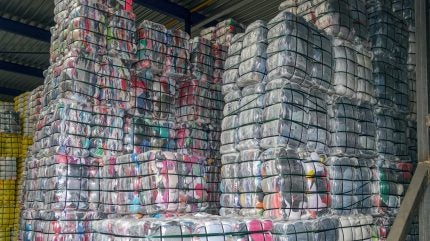
The study titled, ‘From Collection of Used Clothes in Sweden to Reuse in Kenya: A Case Study of Humana Lt’s Value Chain for SecondHand Clothes’, was commissioned by Humana Lithuania.
The report’s objective is to conduct a case study that details and examines the value chain of secondhand clothes collected in Sweden, destined for the Kenyan secondhand clothing market.

Discover B2B Marketing That Performs
Combine business intelligence and editorial excellence to reach engaged professionals across 36 leading media platforms.
It aims to outline the “markets’ dynamics” and assess the potential economic activities, job creation, and socio-economic effects stemming from this trade. The focus is on the “post-consumer textiles”.
The document outlines the various stages of the value chain, including sorting processes in Lithuania and Oman, leading up to the importation and resale within Kenya’s secondhand clothing market.
According to the report, the common critique that equates the export of secondhand clothes to Kenya with dumping is “not supported by evidence”.
Kenya imposes substantial import duties on mitumba, a term used in East Africa for secondhand clothes, making it financially impractical to import textiles only to dispose of them in landfills, the study said.

US Tariffs are shifting - will you react or anticipate?
Don’t let policy changes catch you off guard. Stay proactive with real-time data and expert analysis.
By GlobalDataThe report highlights challenges faced by textile collectors due to new EU waste regulations under the Waste Framework Directive.
The mandatory separation of textiles from household waste in Sweden, which started in January 2025, has already begun to increase volumes while simultaneously decreasing the proportion of textiles suitable for reuse.
According to findings, this change is exerting financial and operational pressures on collectors who already operate on narrow margins.
Cristofer Ståhlgren from Human Bridge, a Swedish used textiles collector, said: “As textile collectors, we support better textile waste management, but the new rules are placing logistical and financial strain on our operations. Collectors are being overburdened without adequate support, while systems enabling effective reuse are being disrupted. If we’re serious about circularity, we must protect and strengthen the existing reuse infrastructure.”
The IVL report stresses the importance of having separate collection systems for reuse and recycling in order to maintain quality streams for reuse. Sweden’s experience serves as an example of how EU directives can have unintended negative consequences if not carefully planned.
Key insights from the report:
– Differentiated collection systems are necessary for reuse and recycling: Sweden’s mandatory textile collection has led to more collected textiles but also a greater number of items unsuitable for reuse.
– Significance of sorting and quality control: In 2024, Humana Lithuania sorted approximately 38,000 tonnes (t) of used textiles, with 76% earmarked for reuse and 16% for recycling.
– Creation of economic and social value: The secondhand clothing trade fosters employment opportunities from European collection points to Kenyan retail outlets.
– Unprofitability of dumping: With Kenya’s high import taxes on mitumba, discarding imported textiles would not be economically viable.
– Support for humanitarian efforts: The sorting and resale of secondhand clothing in the Global North often support charitable work and social causes in the Global South.
Humana Lithuania CEO Orjan Osterdal said: “As EU countries introduce new collection and Extended Producer Responsibility requirements under the Waste Framework Directive, it’s crucial to recognise that global clothing reuse, built on quality exports, is a key part of the solution to a circular textile economy.”
This report comes after Mitumba Consortium Association of Kenya (MCAK) called on global stakeholders promote evidence-based research and policymaking in January this year to tackle misinformation about the secondhand clothing industry.
A report by Consulting For Africa (CFA) and Abalon Capital Limitada, in March this year revealed that secondhand clothing (SHC) sector emerged as a significant economic driver in Mozambique, sustaining over 200,000 jobs in both formal and informal sectors.





